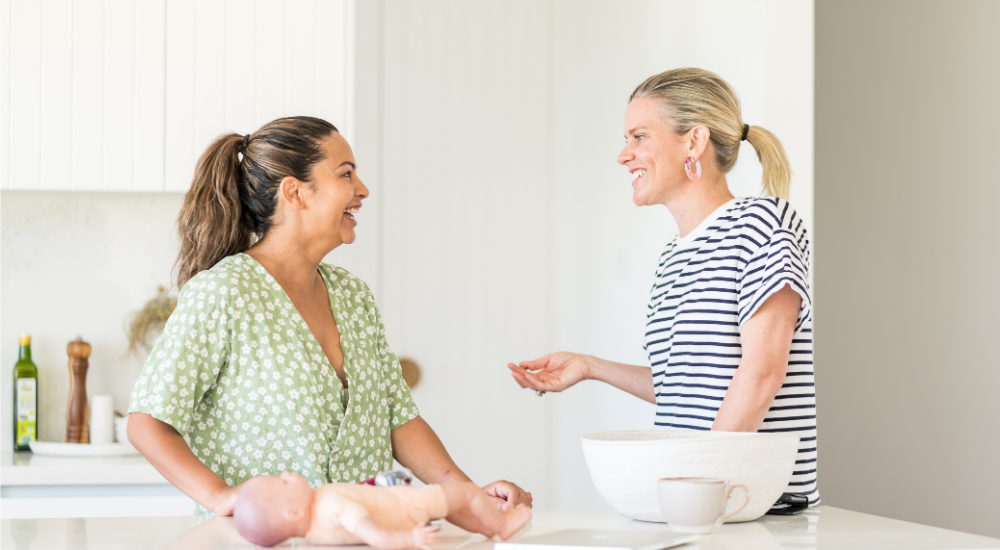All Your Childbirth Options Explained
Are you thinking about writing a birth plan ahead of your birth? I’ve blogged about birth plans before. Check out the post here.
One of the key points I made in that post, and it’s something I talk about inside the Ultimate Online Birth Course, is to think about creating a Birth Wish List rather than a Birth Plan.
Essentially, a Birth Wish List is an outline of what you would like to happen on the day you birth your baby. It’s a tool to plan your birth preferences and ways to communicate these with your birth partner (whether that’s your life partner, mum, sister, best friend) and your healthcare providers.
Unlike a Birth Plan, which sounds rigid and as though things must ‘go to plan’, a Birth Wish List is more flexible. It’s an outline of your birth preferences, not a 5-page plan of exactly how you want your birth to pan out. Because ultimately, no one knows exactly what your birth will look like. No two women, babies or births are the same.
In this post, I want to run through some of the childbirth options available to you to help you start preparing your Birth Wish List. These are some of key decisions you make about where you’ll give birth, who will be there with you.
Where can you give birth in Australia?
The vast majority of women in Australia give birth in a hospital, about 97%! However, there are other options available to you. In 2016 over 5,000 women gave birth in birthing centres and nearly 1000 women gave birth at home. One of the first decisions you might make with your Birth Wish List is deciding where you want to birth. There will be many factors that influence your decision including what’s available in your area, whether or not you have a high-risk pregnancy and what you personally feel comfortable with.
The three main options as to where you can birth in Australia:
– In a public or private hospital
– In a birthing centre
– At home
Hospital
Birthing at a hospital means birthing in the maternity unit. You’ll generally be looked after by midwives but there will be obstetricians and other specialists on-hand if needed. Even if you are birthing in a hospital, there will still be many options available to you such as the type of pain relief you’ll use, if you’ll birth in a birthing pool or bath (many hospitals now offer this as an option) and who will be present with you during birth.
Each hospital will have its own policies regarding things like whether you’re allowed to have a birth photographer, who else can be present with you in the birth suite etc. Discuss your birth wishes with your care provider well ahead of time so that you’re clear on what is and isn’t an option.
Birthing in a hospital means that you’ll have access to various types of rain relief including an epidural should you want or need one. Also, many women feel peace of mind knowing that in the event of an emergency, being in a hospital is the safest place. This is something to discuss with your partner and your healthcare provider – in some cases, birthing in a hospital may be the only option available to you.
You may also have the choice to birth in a public or private hospital. This will depend on whether there is a private hospital in your area, whether they have a maternity unit and if you have private health insurance. Choosing a public or private hospital is a matter of personal choice but some of the reasons that women may opt for a private hospital include; guarantee of having a private room and being able to stay in hospital longer if you chose to.
Birth Centre
Birth centres are an option for women who have a low-risk pregnancy and if you’re lucky enough to live in an area with a birthing centre. Birthing centres are often attached to hospitals, so while they generally have a far less clinical feel to them, if you needed urgent medical help, the hospital facilities are close by.
Birth Centres may provide more flexibility in terms of who can be in the room with you when you give birth. For example, some centres allow your children to be present, additional support people etc. You’ll have your own private space to move about during labour and most likely a birthing pool or bath as well.
One of the downsides of birthing centres is the limited options for pain relief. For example, an epidural won’t be available to you in a birthing centre.
Home Birth
Home birth is still a relatively uncommon choice; however, it’s building in popularity. Many birthing and midwifery accounts on social media feature women birthing at home, so it’s easy to start believing that it’s a really common option because you see so much of it! But in Australia, it’s still less than 1% of women who birth at home.
If you have a low-risk pregnancy and have found a wonderful midwife who performs home births, home birthing may be an option for you. Reasons for choosing a home birth include; feeling safe and secure in the privacy of your own home, the freedom to move about and the freedom to have who you want there with you during the birth.
The risks of having a home birth include having to relocate to a hospital for specialist medical care in the event of an emergency and not having access to the full range of pain relief options. Choosing to have a home birth isn’t a decision to make lightly, but if you’ve weighed up all the risks and benefits and have done all the research about what’s best for you, found an experienced and qualified healthcare provider who practices home births, home births are a viable option for some women who want a more personalised and intimate birth experience.
Do you want a Birth Doula?
Many women become confused about the difference between a midwife and a doula. A midwife is a medical professional who is trained and qualified to provide medical care and support in your pregnancy, birth and early motherhood.
A doula is a support person but they don’t replace a midwife. Some women describe doulas as a mother to the mother, someone who provides emotional and practical support during pregnancy, birth and in the early weeks with a newborn.
Some of the ways a doula can support you during labour include;
– Guide you through breathing and mediation exercises
– Massage you
– Suggest different positions and movements to help with labour
– Help you create the environment you want with music, aromatherapy, essential oils, heat packs, lighting etc
– Make you drinks and snacks
– Reassure you, support you, guide you with positive affirmations and provide overall
emotional support
Anecdotally, many women who have a birth doula present for their birth report higher overall levels of satisfaction with their birth experience. Choosing whether or not to have a doula present at your birth is a highly personal choice and one that you should make with your partner as a team. It’s important that you both feel completely comfortable and relaxed with your doula, that they understand your wishes, what you want and don’t want.
Do you want a Birth Photographer/Videographer?
Many couples are now choosing to document the birth of their child with a professional photographer or videographer. This is a highly personal choice and not something you feel you should or shouldn’t do – it’s about what feels right for you and your family.
There are photographers that specialise in birth photography and there’s no question that they can capture some truly spectacular moments! If you’re planning to use a birth photographer, do loads of research beforehand. Not only do you want to find a style of photography that you like, but it’s important to find a photographer that you connect with and feel comfortable around. After all, they’re going to be present during one of the most intimate moments of your life!
Be aware that some hospitals may not allow a photographer in the birth suite or operating theatre if you’re having a planned c-section. If you’re thinking about hiring a birth photographer, be sure to ask the hospital etc early so that you can plan ahead.
What type of pain relief do you want?
There are two key forms of pain relief in labour: natural/ non-medicated and medicated.
– Natural options include things like; movement, massage and hot water, immersion in water.
– Medical options include: paracetamol, gas (nitrous oxide), epidural.
When planning your birth wishes, it’s important to keep in mind that things may change in labour. You might not want to use a certain type of pain relief, but during labour, it may be a good option for you that you want at that time.
The key to writing your birth wishes around pain relief is to understand what your options are, how they work and any associated risks. If you’re educated and understand what the different options are and how they could impact your birth, you’ll be better placed during labour to make the best decision for you and your baby.
These are just some of the major birth options that you’ll need to discuss with your birth partner, research and plan for ahead of time. Other options that you might include in your birth wish list include;
– Do you know the baby’s sex? If not, who do you want to announce it?
– Do you want delayed cord clamping?
– Will you be trying to breastfeed straight away?
– What are your preferences if you’re overdue? Do you have any induction methods
you’d prefer or want to try and avoid if possible?
– Do you have any religious, spiritual or cultural requests that you want your
caregivers to know about?
Like all things pregnancy, birth and baby, knowledge is key. Removing the fear of the unknown is one of the main ways you can prepare for birth. Once you’ve done your research, have an understanding of all the options available to you, and write down your preferences, you’ll start to feel calm and prepared for your best birth.




